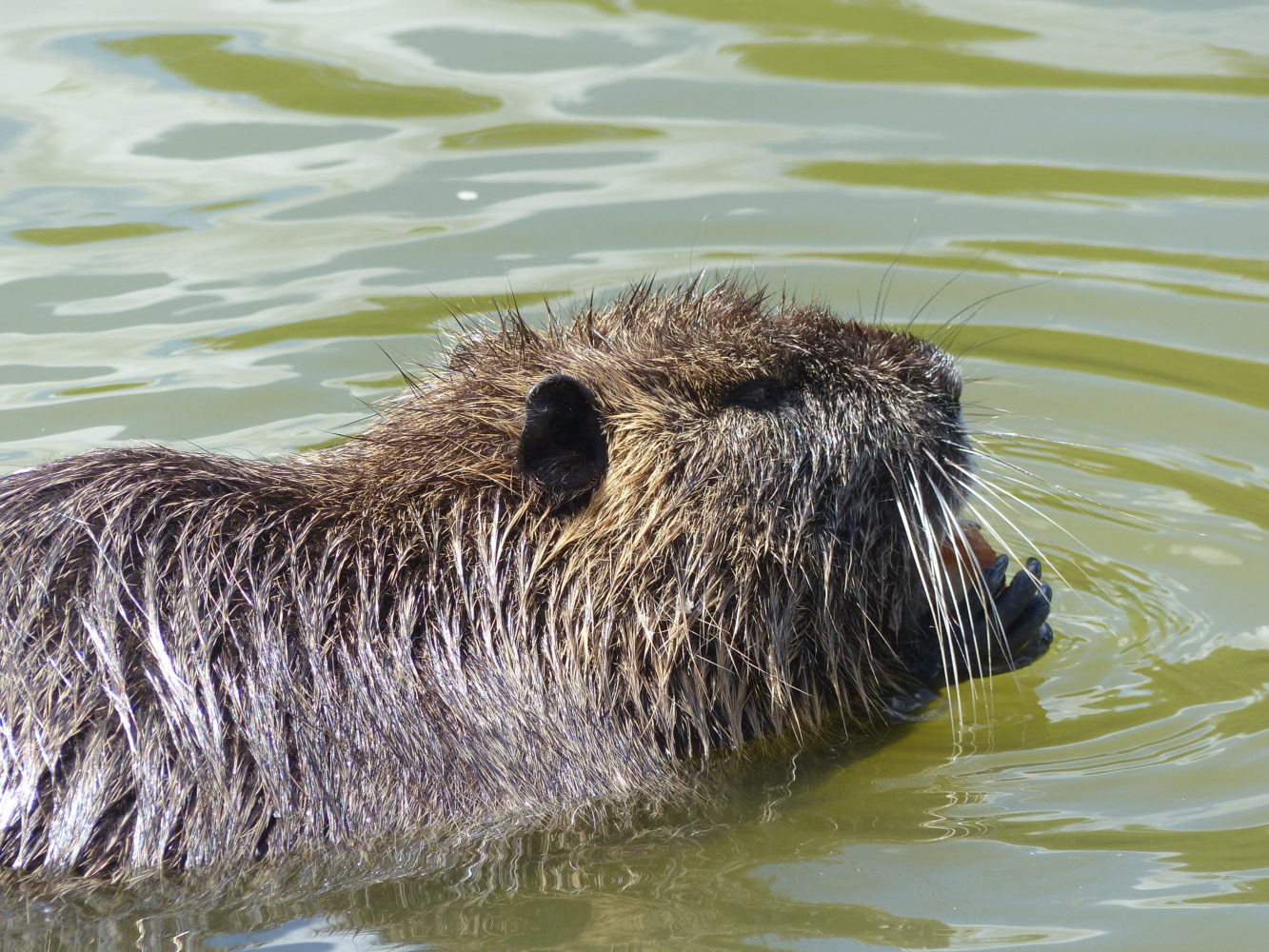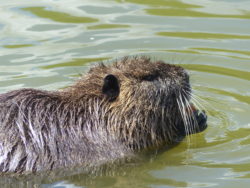Nutria à l’Orange
It takes a bold imagination to look at such critters and see canapés.
Published: August 30, 2019
Last Updated: March 22, 2023

Photo by Tsaag Valren
It takes a bold imagination to look at such critters and see canapés.
There are plenty of reasons to warm up the oven. Louisiana’s nutria population began with a few dozen animals imported into the state in the 1930s. By 1963, they numbered three million. Nutria are quick breeders with few natural predators, and the finicky herbivores enjoy munching on the roots of marsh grass that would otherwise hold soil together. By some estimates, nutria are currently gnawing on one hundred thousand acres of wetlands, the untethered dirt left in their wake dissolving into open water.
A demand for nutria fur in the ’60s and ’70s once helped manage the population. At its height, as many as 1.9 million nutria pelts were sold per year. When the international fur market shrank in the ’80s, the Department of Wildlife and Fisheries revisited the “nutria for human consumption” idea to pick up the slack.
A marketing campaign launched in 1998 showed promise. The department published flyers emblazoned with research claiming that nutria have more protein, less fat, and lower cholesterol than turkey, chicken, or beef. There was talk of rebranding the meat as ragondin (the French word for nutria) or even bayou rabbit, given the similarities in taste between the two mammals. The campaign also enlisted the likes of Enola Prudhomme (sister to Paul Prudhomme) and French chef Philippe Parola to dream up new recipes featuring the invasive species, leading to such gems as smothered nutria, culotte de nutria à la moutarde, and nutria à l’orange, all of which are easy to find with an internet search, should the urge strike to get crafty in the kitchen.
To the chagrin of the Department of Wildlife and Fisheries, the US Food and Drug Administration wouldn’t bite. It required that mammal meat sold across state lines be caught and killed in a slaughterhouse as opposed to hunted in the wild. Given that Louisiana was trying to address an excessive population of wild rodents, the federal policy presented a logistical nightmare, and it effectively halted any hope that nutria meat could go mainstream.
The public seemed just as apprehensive at the idea of eating nutria. When asked in a 1997 interview with the New York Times to speculate on this reluctance, Dr. Robert Thomas, founding director of the Louisiana Nature Center, said, “I just don’t think people like to eat things that they see dead on the highway.”
A fair point. But as we all know, Louisianans routinely chow down on millions of pounds of crawfish each spring. This wasn’t always the case. Crawfish—bottom-feeders with a substantially dirtier diet than nutria—used to be stigmatized as food for the poor. The crustaceans didn’t enter the dietary mainstream until the late 1950s, when Elvis Presley crooned about them in the film King Creole, and Breaux Bridge began its “world’s largest crawfish boil.”
Perhaps the answer lies there. Maybe all that’s needed to take nutria from undesirable to edible is, in true Louisiana fashion, a song and a festival in its honor.
Morgan Randall is a writer, marketing consultant, and full-time road-tripping van dweller. She’s the author of no books and has no credentials, but she’s an expert at asking the right questions to people who are more knowledgeable than her. You can find her fueling up at your local rest stop or at morganeliserandall.com.
